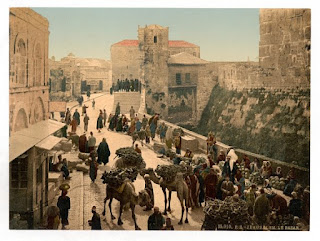Camels, Carbon Dating, and the Bible
For many years, scoffers have attempted to discredit the Bible as a reliable source of history. Archaeology is a comparatively recent discipline, and people have fallaciously argued that if something was not verified by it, the Bible is wrong. Prominent archaeologists have stated that the Bible is reliable.
Recent discoveries from both science and archaeology continue to affirm the Bible, but faulty science has been used to make it look wrong. For example, tainted carbon dating methods on camel bones have been used in an attempt to refute Scripture.
 |
| Street of the Tower of David, Jerusalem / 1905, LoC |
Tel Aviv University archaeologists Lidar Sapir-Hen and Erez Ben-Yosef, who have been exploring ancient Aravah Valley copper mines between the Red Sea and the Dead Sea, decided to take a crack at the camel question. The camel question is not a new one, and they are not the first to dispute the Bible’s historical accounts of camels. Sapir-Hen and Ben-Yosef are the first, however, to publish a study dogmatically drawing down the numerical power of carbon dating upon the biblical accounts.
To read the full article, see "The Bible Wins the Debate with Carbon-Dated Camel Bones."